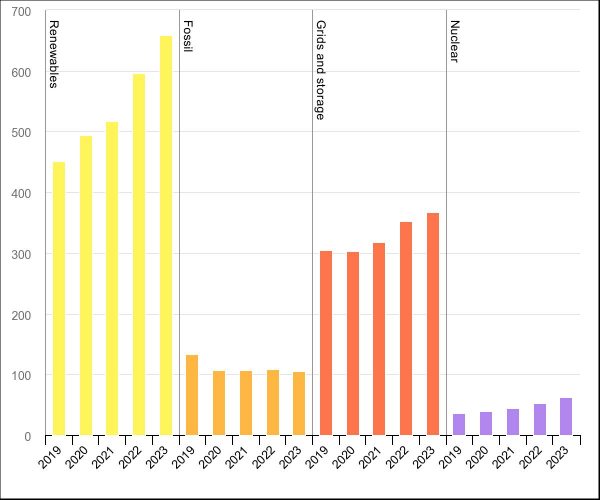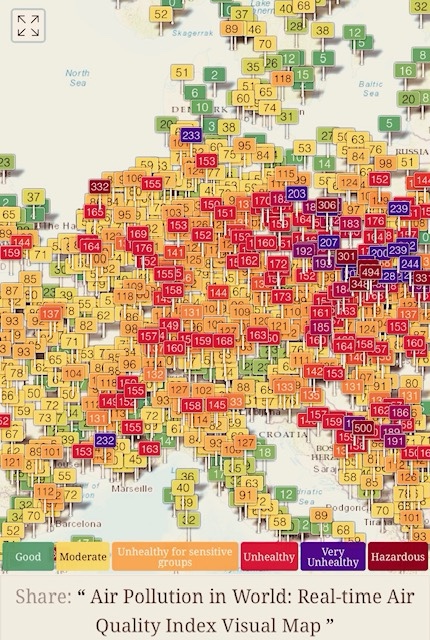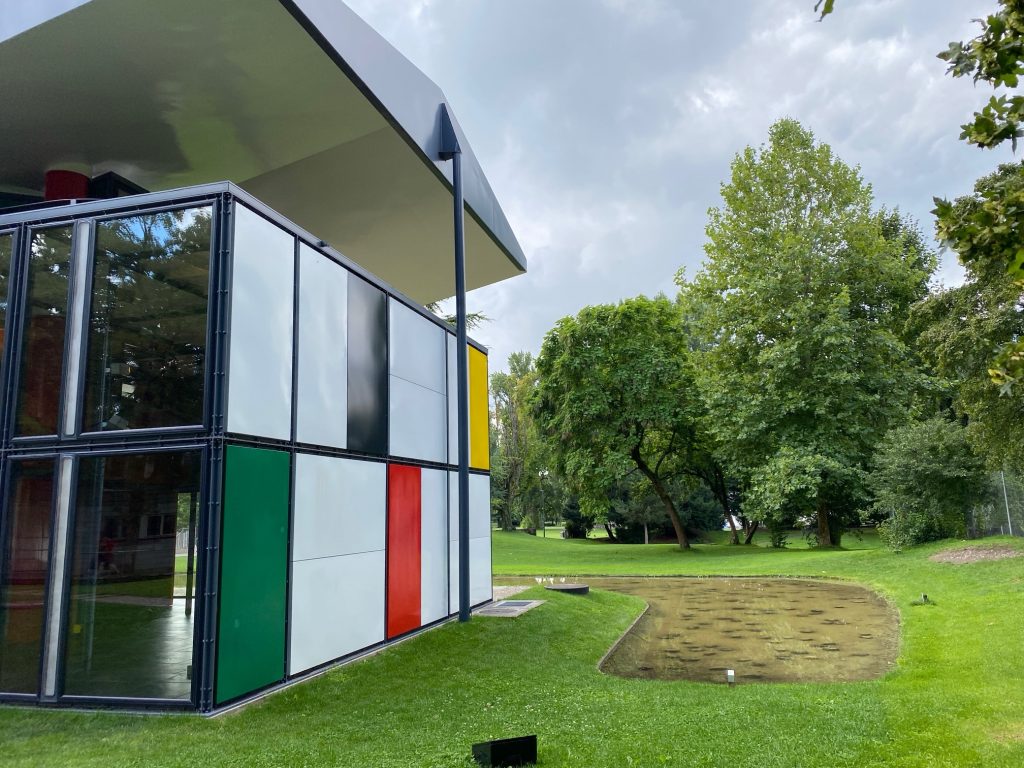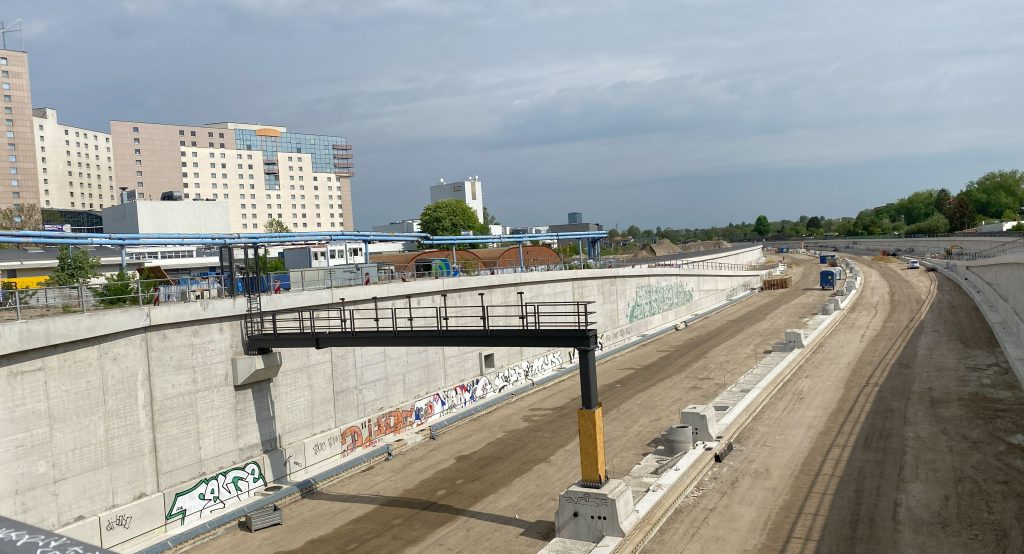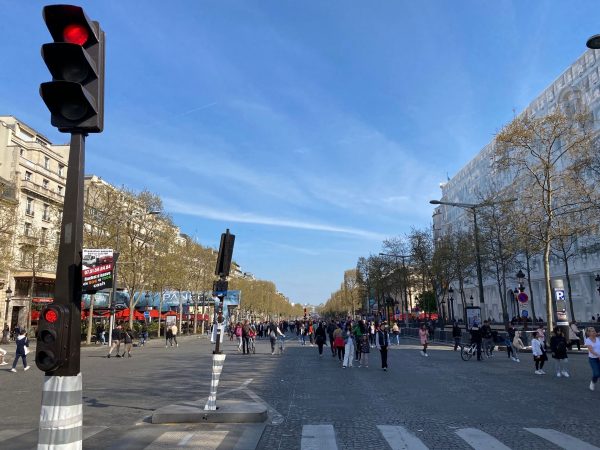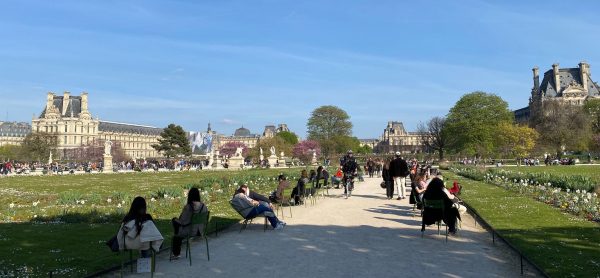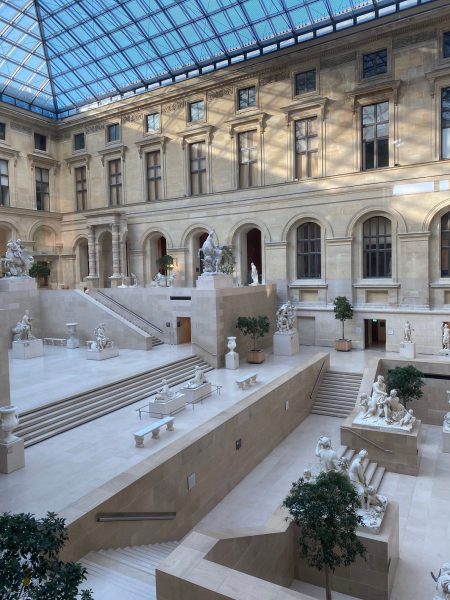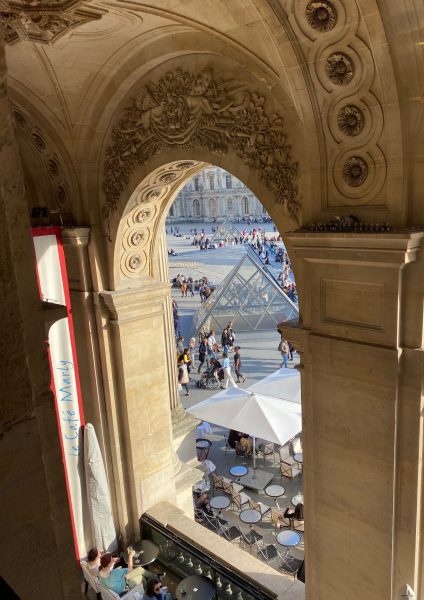The car industry sells more electricity-driven than diesel-cars for the first time in July 2023 (ACEA, 2023). This is a turnaround, considering the large share of the most polluting cars in the EU. It is difficult to see this as good news as newly sold diesel-cars will be around and polluting for many years to come. Hybrid cars are an own category and full of heavy additional material that allows 2 types of mobility. Tax reductions to push hybrid cars into the EU-market were very expensive for tax-payers and increasing inequality through co-financing rather expensive cars. 36,3%, the largest share, are still petrol-driven cars, with little awareness for further CO2 reductions. This is the slow evolution of the energy consumption pattern of the automotive industry in Europe.
On the energy production side there have been substantial efforts to invest in clean energy, too (IEA, 2023). With the world burning at several places already it is, after all, good news that investment in solar energy production on a global level has reached the level of investment in fossil fuels. Major drivers of this evolution are 1. China, 2. Europe and 3. The U.S. A. (unadjusted for population size) according to this investment report. Grids and storage investments rise equally to new heights, reflecting new distributional aspects of power provision within and between countries. We are in the race against the burning of our planet due to our shameless use of fossil fuels, worst in form of flying small jet planes. Besides the large company and state investments we need the spending and investment power of the masses to speed up the end of the fossil fuel age of polluting dinosaurs. Please do not replace one dinosaur (coal, oil, gas) with another one (nuclear). Too big to fail is maybe an economic rationale, but it does not withstand natural disasters (Fukushima), human failure (Tschernobyl) or war activity (Saporischschja).
(Figure source: IEA, Power investment in billion US$, 2019-2023, IEA, Paris https://www.iea.org/data-and-statistics/charts/power-investment-2019-2023.
